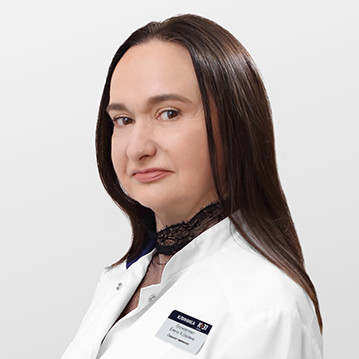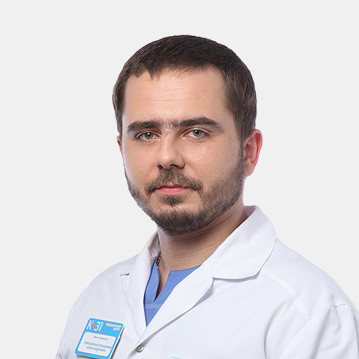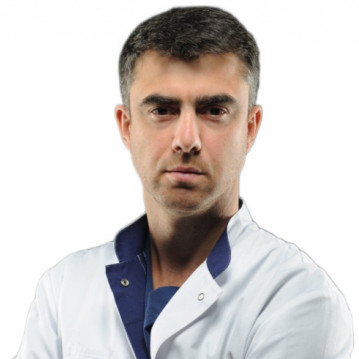A
Areola – pink-brown area around the nipple.
Amastia – a condition characterized by the absence of glandular tissue in the presence of the nipple and areola.
Augmentation – enlargement of a part of the body with the help of implants, lipofilling or fillers: breasts, lips, buttocks, etc.
Abscess – purulent inflammation of tissues with the formation of a purulent cavity.
ACR classification – system for assessing the radiological density of mammary glands on mammography.
B
Biopsy – minimally invasive intervention that allows you to obtain cells, fluid or a column of tissue from the zone of pathological changes for analysis.
BIRADS – a standardized scale for assessing the results of mammography, ultrasound and MRI according to the degree of risk of having breast malignant tumors. BI-RADS is an acronym for Breast Imaging-Reporting and Data System. If the findings are classified as BI-RADS 4-5, a biopsy is required. When concluding BI-RADS 3, talk to your doctor and discuss the reasons for this conclusion and the tactics of further examination.
C
Cyst – an expanded secretory section of the mammary gland, filled with the fluid formed in this section.
Capsule around the implant – fibrous capsule around the implant. Even when the safest (inert) implant is installed, the capsule is formed around as a defensive reaction. In the case of breast implants, this is good - because the capsule provides additional coverage over the top of the implant. In the case of threads for lifting (threads are also implants), this is bad, because subcutaneous fibrosis forms, which in some cases causes retraction along the thread.
Capsular contracture – the better the quality of the implant, the thinner the capsule of fibrous tissue around it. But the body can react more sharply to a foreign body, and then the fibrous capsule begins to thicken and lead to compression of the implant - capsular contracture. There are 4 degrees of contracture: I and II stages do not bring discomfort and visible defect. Stage III and IV require intervention, since the pressure of the capsule becomes visually noticeable and palpable.
Calcifications – limited accumulation of calcium salts (lime) in the mammary gland. Sometimes it can be a sign of the development of an early stage of cancer. Usually, calcifications are not felt in the thickness of the breast, however, they are easily recognized by mammography.
Contrast mammography – This is a mammography using iodinated contrast medium. The contrast agent helps to find new blood vessels that appear with the development of a malignant tumor. Your healthcare provider may order a digital contrast mammography for a variety of situations, including those listed below.
D
Duct – a system of hollow tubes, which are a transport system as well as a storage for milk.
DCIS – this is the initial stage of tumor development, which has all the signs of cancer.
Ductography – diagnostic procedure aimed at examining the ducts of the mammary glands. It is performed using an iodine-containing contrast agent, which is injected through the nipple into the duct system.
Ductectasia – expansion of the lumen of the ducts of the mammary gland.
F
Fat necrosis – benign formation resulting from the replacement of adipose tissue with fibrous tissue.
Fine needle aspiration biopsy – minimally invasive intervention allowing for the collection of cells or fluid for research.
Fibroadenoma – the most common breast tumor, consisting of fibrous and glandular tissue. It is a violation of the development of the breast lobule. It occurs at a young age.
Fibrocystic changes – violation of the normal ratio of glandular and fibrous tissue, when dense fibrosis compresses the ducts and cysts form.
G
Gynecomastia – deviation in men in the development of the mammary glands. Many men have breasts, but they are not mammary.
Galactorrhea – pathological spontaneous outflow of milk from the mammary glands without connection with the process of feeding the child.
H
Hamartoma – a benign process, characterized by the presence of a volumetric formation inside the mammary gland with a clear capsule and a different combination of fibrous, glandular and adipose tissue.
Hematoma – formation resulting from damage to blood vessels and the accumulation of blood in tissues.
I
Intraductal papilloma – a benign formation arising from the cells lining the ducts of the mammary gland.
J
Juvenile papillomatosis – the formation of multiple benign neoplasms of the mammary gland, papillomas, in the lumen of the ducts of the mammary gland, at a young age.
L
Lactostasis – stagnation of milk in the ducts of the mammary glands associated with the process of breastfeeding.
Lipoma – a benign tumor consisting of fat develops in the layer of subcutaneous adipose tissue.
M
Mastopexy – breast lift.
Mastitis – inflammatory lesion of the mammary gland, proceeding in acute or chronic form. It occurs when tissues are infected with various bacteria.
Mammography – a procedure that uses X-rays to form a picture. As a result, 4 images are obtained - projections, two for each mammary gland: cranio-caudal or direct and mediolateral or oblique. Performed on special. X-ray equipment - mammography. For image quality and radiation dose reduction, a specific technique is used that requires breast compression for 5-10 seconds.
Magnetic resonance imaging of the breast – is performed in a conventional magnetic resonance imager, using a specialized coil for the breast, in the prone position. During the study, a contrast agent that does not contain iodine is injected into the vein.
Mondor's disease – inflammation of the superficial veins of the anterior surface of the chest and abdomen or breast.
Mammary cancer – these are pathological changes in breast cells that occur under the influence of various factors that acquire the ability to uncontrolled growth and spread to distant organs and tissues.
N
Nipple adenoma – a rare benign breast tumor that occurs in the nipple area.
O
Oleogranuloma – a benign tumor that appeared as a response to the appearance of any foreign bodies in the tissues of the mammary gland. It can be silicone, implants, various gels, ointments, non-absorbable synthetic threads that remained in the body after operations.
P
Paget's disease – one of the variants of breast tumors. This is a rather rare, separate form of oncology - cancer of the nipple and / or areola of the breast.
Polymastia – this is a developmental pathology, which is characterized by the presence of accessory mammary glands.
Polytelia – developmental anomaly in the form of an increase in the number of nipples of the mammary glands along the nipple line of the trunk.
Phyloid tumor – benign neoplasm. It can occur at any age. Differs in large size and rapid growth. In 10% of cases, it degenerates into a sarcoma.
Poland syndrome – partial or complete unilateral absence of the pectoralis major muscle and congenital malformation of the hand from the side of the chest lesion.
R
Restructuring – violation of the normal structure of breast tissue on mammography, ultrasound or MRI as a result of trauma (operation) or the growth of pathological neoplasms.
S
Semba radial scar – benign lesion of the breast. This is a central scar surrounded by radially located ducts with varying degrees of cystic changes. In 30% of cases, Samba's radical scar is associated with breast cancer microfocus.
Screening – system of primary examination of people without complaints in order to detect diseases.
Scintigraphy – a research method that consists in introducing radioactive substances into the body and obtaining an image by determining the radiation emitted by them.
Stereotactic biopsy – minimally invasive intervention that allows the collection of pathologically altered tissue from an organ for the purpose of conducting a study under a microscope, establishing an accurate diagnosis and determining treatment tactics, performed under the control of a diagnostic apparatus, for example, a mammograph.
Seroma – the accumulation of tissue fluid in the subcutaneous tissue in the area of a wound resulting from a surgical operation.
T
Titz Syndrome – inflammation of one or more of the upper costal cartilages in the area of their connection with the sternum.
Trepanobiopsy – minimally invasive intervention, which allows the collection of a tissue column for research.
Tomosynthesis – during the study, projections identical to mammography are used. The difference is the moving X-ray tube, which takes several pictures rotating around the breast, which are later reconstructed into slices with a step of 1 mm.
Tomosynthesis can be performed both as an independent study and in combination with standard mammography. In the process of performing mammography, the radiologist decides on the need to perform additional research in the tomosynthesis or ultrasound mode. This decision is based on the individual structure of the breast, as well as the characteristics of the changes found during the mammography.
U
Ultrasonography – a method using echolocation. An indispensable tool in the diagnosis of breast diseases, it replaces or complements mammography.
Adding ultrasound to mammography improves the physician's ability to distinguish benign lesions from suspicious lesions, thus reducing unnecessary biopsies, especially when breast radiography is dense. Ultrasound is also a method of primary diagnosis in pregnant and lactating women.
V
Vacuum aspiration biopsy – modern, effective technique for obtaining tissue from the zone of pathological changes in the mammary gland. The difference from trepanobiopsy is the technique of obtaining the material and the amount of tissue. With PSA, the amount of tissue obtained for research is greater. Also, only PSA is performed under MRI control.
X
X-ray structure density – the ratio of fibrous, adipose and glandular tissue on mammograms. The higher the density (C-D), the lower the sensitivity of mammography. At density D, the sensitivity of mammography decreases to 50% and requires the appointment of additional examination methods, most often this method is an ultrasound of the mammary glands.














